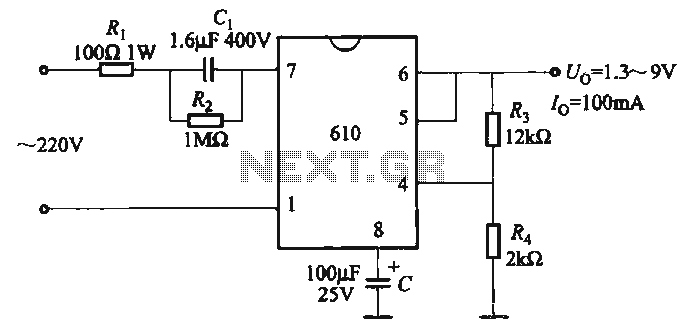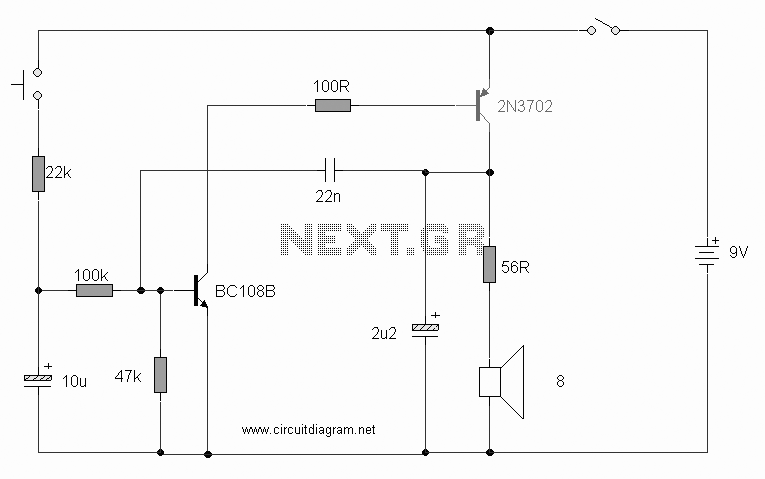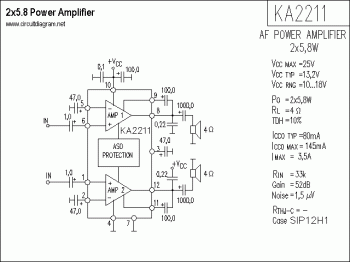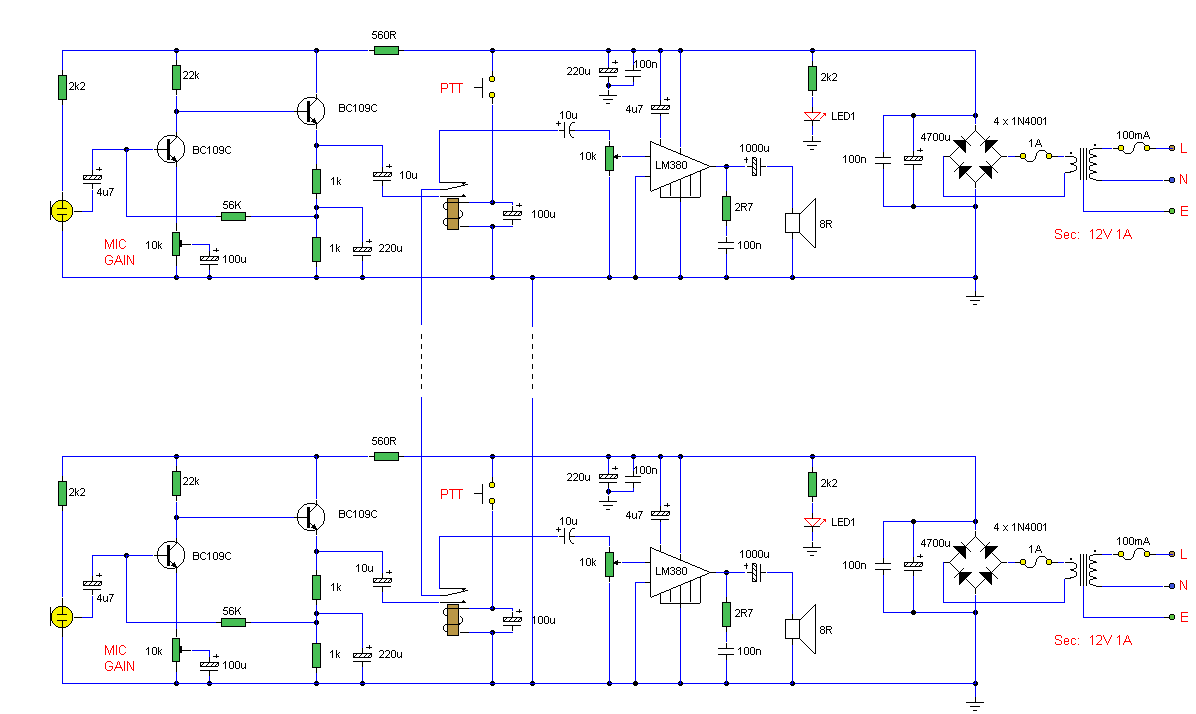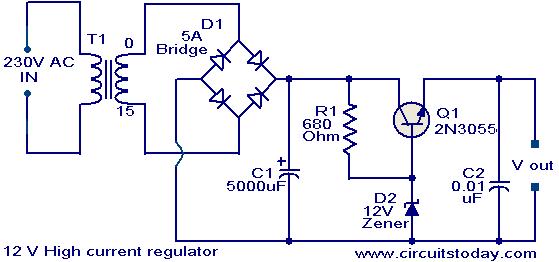
High power siren
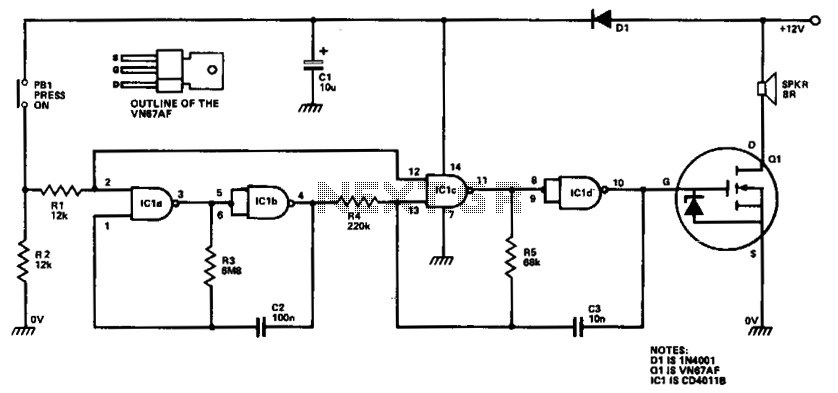
ICla and IClb are configured as a slow astable multivibrator, while IClc and ICld are arranged as a fast astable multivibrator. The output from the slow astable modulates the frequency of the fast astable, and the output from the fast astable is sent to the external speaker through the Q1 VMOS power FET amplifier stage. Both multivibrators are "gated" types, allowing them to be activated or deactivated using push button PB1.
The circuit consists of two distinct astable multivibrators, each serving a specific function in the overall design. The slow astable multivibrator, formed by ICla and IClb, operates at a lower frequency, providing a modulating signal that influences the frequency of the fast astable multivibrator composed of IClc and ICld. This modulation allows for a dynamic adjustment of the output frequency, creating a more complex audio signal suitable for driving an external speaker.
The fast astable multivibrator generates a higher frequency output, which is then amplified by the Q1 VMOS power FET stage. This amplification stage is crucial for driving the external speaker, ensuring adequate power levels are achieved for audible sound output. The VMOS FET is selected for its high efficiency and ability to handle significant power levels, making it suitable for audio applications where clarity and volume are essential.
The gating mechanism provided by push button PB1 allows for convenient control over the operation of the multivibrators. When PB1 is pressed, it enables or disables the multivibrator circuits, allowing for user interaction and control of the audio output. This feature enhances the versatility of the circuit, making it adaptable to various operational scenarios.
Overall, this configuration of astable multivibrators and amplification stages creates a robust circuit capable of generating modulated audio signals, suitable for applications where sound output is required. The design emphasizes efficiency, user control, and flexibility, making it an effective solution for audio signal generation.ICla and IClb are wired as a slow astable multivibrator and IClc-ICld are wired as a fast astable. The output of the slow astable modulates the frequency of the fast astable, and the output of the fast astable is fed to the external speaker via the Ql VMOS power FET amplifier stage. Both are "gated" types, which can be turned on and off via PB1.
The circuit consists of two distinct astable multivibrators, each serving a specific function in the overall design. The slow astable multivibrator, formed by ICla and IClb, operates at a lower frequency, providing a modulating signal that influences the frequency of the fast astable multivibrator composed of IClc and ICld. This modulation allows for a dynamic adjustment of the output frequency, creating a more complex audio signal suitable for driving an external speaker.
The fast astable multivibrator generates a higher frequency output, which is then amplified by the Q1 VMOS power FET stage. This amplification stage is crucial for driving the external speaker, ensuring adequate power levels are achieved for audible sound output. The VMOS FET is selected for its high efficiency and ability to handle significant power levels, making it suitable for audio applications where clarity and volume are essential.
The gating mechanism provided by push button PB1 allows for convenient control over the operation of the multivibrators. When PB1 is pressed, it enables or disables the multivibrator circuits, allowing for user interaction and control of the audio output. This feature enhances the versatility of the circuit, making it adaptable to various operational scenarios.
Overall, this configuration of astable multivibrators and amplification stages creates a robust circuit capable of generating modulated audio signals, suitable for applications where sound output is required. The design emphasizes efficiency, user control, and flexibility, making it an effective solution for audio signal generation.ICla and IClb are wired as a slow astable multivibrator and IClc-ICld are wired as a fast astable. The output of the slow astable modulates the frequency of the fast astable, and the output of the fast astable is fed to the external speaker via the Ql VMOS power FET amplifier stage. Both are "gated" types, which can be turned on and off via PB1.
